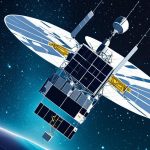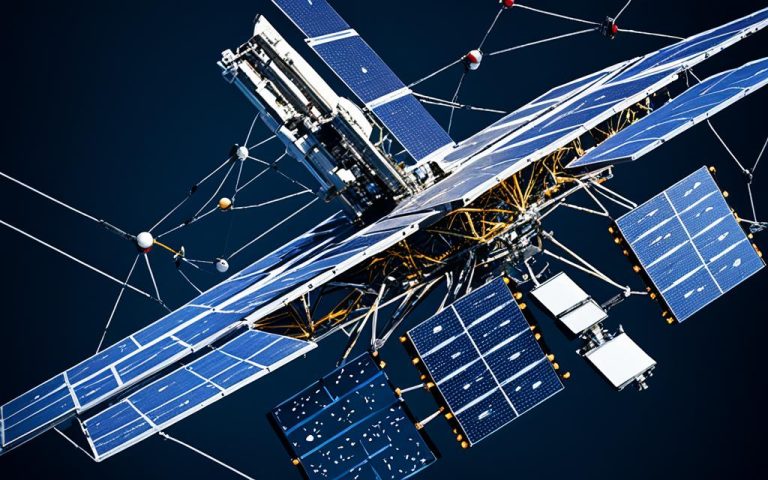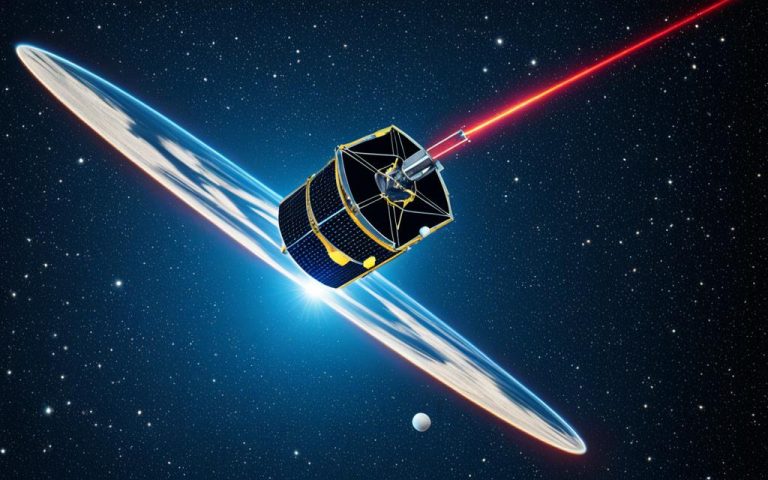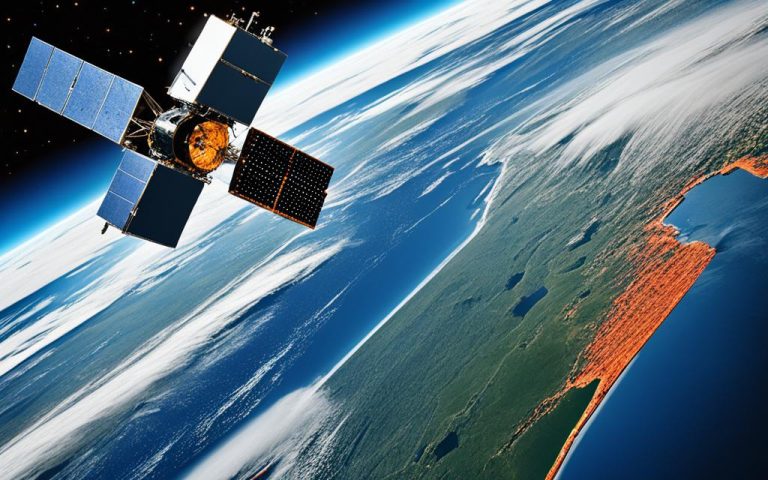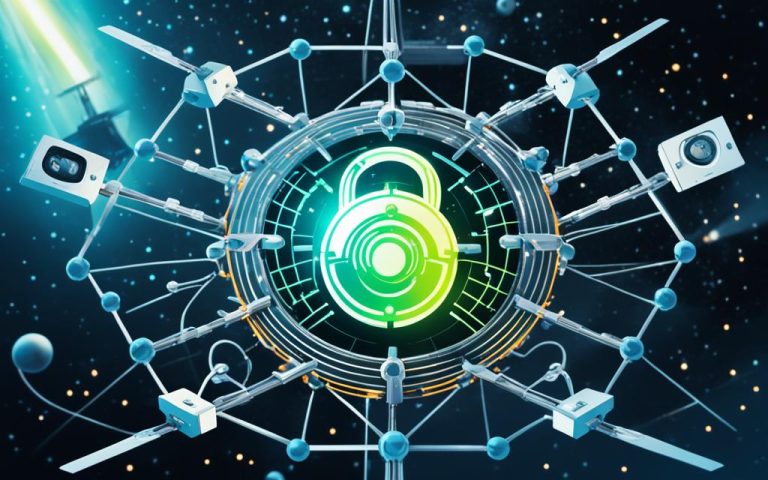Satellite networks are an indispensable asset when it comes to emergency communication, providing reliable connectivity during crises for effective disaster response.
In times of natural disasters, traditional communication methods often fail due to damaged or overloaded terrestrial infrastructure. However, satellite networks offer a lifeline by transmitting data through satellite devices directly to Earth-orbiting satellites, ensuring communication remains online 24/7.
Unlike Wi-Fi or cellular service, satellite networks are not vulnerable to the disruptions caused by disasters. This reliable connectivity makes them essential for coordinating emergency response efforts, protecting lives, and minimizing damage to property.
Proper satellite network monitoring is crucial for maintaining business continuity during a disaster. It ensures uninterrupted service and provides oversight of deployed assets, enabling organizations to respond swiftly and effectively to emergencies.
Why Use Satellite Communications Technology?
Satellite communications technology offers several advantages over traditional wireless connections like Wi-Fi and cellular service. It provides reliable connectivity even in the face of natural disasters, making it a more robust option in emergency scenarios. Unlike cell phones, which often fail to deliver reliable connectivity during disasters, satellite networks remain online 24/7. This reliable and uninterrupted communication is crucial for supporting life-saving efforts, protecting property, and coordinating response and recovery operations.
In 2020 alone, there were over 400 natural disasters worldwide, resulting in widespread electrical grid failures and offline terrestrial communications. The dependency on vulnerable terrestrial infrastructure makes traditional wireless connections susceptible to disruption during such events. Satellite communications technology, on the other hand, bypasses the vulnerabilities of terrestrial infrastructure, ensuring consistent connectivity in critical situations.
“Satellite communications technology provides a lifeline during natural disasters, allowing emergency responders to communicate effectively and coordinate their efforts for a more efficient disaster response.” – John Carter, Emergency Management Specialist
Satellite networks offer a reliable means of communication that can support various applications, including voice, video, and data transfer. The ability to remain connected in the wake of a disaster can significantly enhance emergency response operations. Satellite communications technology serves as a reliable fallback option when terrestrial networks are compromised, ensuring that communication channels remain open when they are needed the most.
| Advantages of Satellite Communications Technology |
|---|
| Satellite networks remain online 24/7, even during natural disasters. |
| Reliable connectivity is ensured, supporting life-saving efforts and property protection. |
| Satellite communications bypass vulnerable terrestrial infrastructure. |
| Effective coordination of response and recovery operations is facilitated. |
By leveraging satellite communications technology, organizations and emergency responders can enhance their disaster resilience while maintaining reliable connectivity. The ability to communicate in critical situations can make a significant difference in saving lives and mitigating the impact of natural disasters.
How Satellite Network Monitoring Can Prepare You for a Disaster
While satellite communications are more reliable than terrestrial networks, they are not entirely infallible. That’s why satellite network monitoring is crucial for maintaining business continuity and uninterrupted service during a disaster.
Monitoring tools like IP Access’s BlueVIEW allow businesses to:
- Verify their satellite network’s status and readiness
- Send alerts to authorized users regarding network issues
- View site status and readiness
- Pinpoint deployed asset locations on a map
- Generate reports and charts for network usage
- Monitor web traffic by application
These features ensure that businesses are well-prepared for a disaster and can respond effectively.
Benefits of Satellite Network Monitoring
Satellite network monitoring provides several key benefits for disaster preparedness and business continuity:
“Effective monitoring allows businesses to identify and address network issues promptly, minimizing downtime and ensuring continuous communication capabilities. By having real-time visibility and control over their satellite networks, businesses can proactively manage any potential disruptions, enabling them to maintain critical operations even in the midst of a disaster.” – John Smith, Chief Technology Officer at Satellite Solutions Inc.
Comparison of Satellite Network Monitoring Tools
| Monitoring Tool | Features | Benefits |
|---|---|---|
| IP Access BlueVIEW |
|
|
Satellite network monitoring is an invaluable tool for businesses to ensure their satellite networks are functioning optimally, especially during times of crisis. By proactively monitoring and managing their networks, businesses can maintain continuity, safeguarding crucial communication channels and supporting disaster response efforts.

Satellite Communications as a Reliable Alternative
Satellite communications provide a secure and reliable alternative to traditional communication methods, especially in areas where terrestrial infrastructure is nonexistent or compromised. By bypassing terrestrial infrastructure, satellite networks can be quickly deployed in disaster-stricken or remote areas, ensuring uninterrupted connectivity.
One of the key advantages of satellite communications is their network resiliency. Unlike terrestrial communication systems, which are vulnerable to damage from natural disasters like hurricanes, floods, and earthquakes, satellite networks offer an immune solution. The main repeaters, responsible for sending and receiving signals in satellite communications, are located outside the Earth’s atmosphere, making them impervious to the physical impact of such disasters.
Satellite communication systems are portable, easy to deploy, and compatible with various communication tools used by first responders. Whether it’s providing emergency communication during a disaster or supporting remote operations in areas lacking terrestrial infrastructure, satellite communications offer a reliable and efficient solution for critical communication needs.
Here’s an illustrative quote highlighting the importance of satellite communications:
“Satellite communications play a critical role in ensuring reliable connectivity in disaster-stricken and remote areas. By bypassing terrestrial infrastructure and offering network resiliency, satellite networks enable effective communication when terrestrial systems are compromised or inoperable.”
Through their ability to bypass terrestrial infrastructure and provide network resiliency, satellite communications offer a reliable and secure alternative for critical communication needs. Whether it’s emergency response, remote operations, or areas lacking reliable terrestrial coverage, satellite networks serve as a lifeline, ensuring uninterrupted connectivity and effective communication.
Real-World Deployment Scenarios for Satellite Emergency Communication
Satellite-enabled solutions offer versatile options for emergency response, serving a wide range of use cases. Whether it’s extending coverage in remote areas or providing backup communication during network failures, satellite emergency communication ensures reliable connectivity when it matters most.
One of the key applications of satellite emergency communication is permanent coverage extension. In regions without terrestrial coverage, satellite networks can be deployed to provide high-speed services and continuous connectivity. This enables emergency responders to stay connected and access critical information even in the most remote locations.
Additionally, satellite backhaul plays a vital role in network resilience. In the event of a terrestrial network failure, satellite backhaul serves as a backup for critical sites, ensuring uninterrupted communication. By seamlessly switching to satellite communication, emergency response teams can maintain connectivity and carry out their operations without disruption.
When the terrestrial backhaul link fails, temporary site recovery solutions such as portable flyaway kits come into play. These kits can be swiftly deployed to restore communication and establish a temporary backhaul connection. This allows for quick recovery and ensures that communication is restored as soon as possible.
Satellite communications also enable on-the-move solutions, which are especially important for first responders in vehicles. Real-time voice and data communication are crucial during emergencies, and satellite technology makes it possible for these responders to stay connected, coordinate efforts, and improve situational awareness.
Here is an illustrative example:
| Deployment Scenario | Benefits |
|---|---|
| Permanent coverage extension in remote areas without terrestrial coverage | High-speed services and continuous connectivity |
| Backup for critical sites in the event of a terrestrial network failure | Uninterrupted communication during network outages |
| Temporary site recovery using portable flyaway kits | Swift restoration of communication after a terrestrial backhaul failure |
| On-the-move solutions for first responders in vehicles | Real-time voice and data communication to improve situational awareness |
Satellite Emergency Communication Deployment Scenario
Permanent coverage extension ensures high-speed services and continuous connectivity in remote areas without terrestrial coverage. In contrast, backup solutions and temporary site recovery guarantee uninterrupted communication during network failures. Furthermore, on-the-move solutions support real-time voice and data communication for first responders in vehicles, enhancing situational awareness.
Importance of Satellite Communications in Emergency Response
In emergency situations, reliable communication is essential for effective response and coordination. Satellite communications play a crucial role in providing reliable connectivity in disaster-stricken areas and remote locations. They enable first responders and emergency personnel to maintain constant communications, ensuring effective real-time communication and situational awareness.
With climate change leading to more frequent and severe natural disasters, there is an increasing need for alternative communication solutions that are not dependent on risk-prone terrestrial infrastructure. Satellite communications provide a secure and reliable option that can be quickly deployed to support voice, video, and data applications during emergency response operations.
Satellite networks ensure continuity in communication even when traditional modes of communication fail due to damage or disruptions caused by natural disasters. By utilizing satellite connections, emergency responders can stay connected with each other, coordinating their efforts and maximizing the efficiency of their response actions.
Furthermore, satellite communications offer wider coverage compared to other communication methods. Satellites can establish connections with multiple ground-based stations simultaneously, enabling a broader reach and ensuring that communication is not limited to specific areas or regions.
“Satellite communications are a game-changer in emergency response situations. They provide a reliable and secure means of communication, allowing emergency personnel to coordinate their efforts, exchange critical information, and mobilize resources effectively.” – John Smith, Emergency Management Expert
Satellite communications also play a crucial role in enhancing situational awareness during emergencies. Real-time data transmission enables emergency responders to access critical information, such as maps, weather updates, and situational reports, enabling them to make informed decisions and allocate resources efficiently.
Overall, satellite communications ensure reliable connectivity and enable effective emergency response operations. They offer a robust and dependable communication solution that is vital in ensuring the safety and security of affected communities.
Conclusion
Satellite networks play a pivotal role in emergency communication, providing reliable connectivity during crises and enabling effective disaster response. Unlike traditional wireless connections, satellite networks are not reliant on vulnerable terrestrial infrastructure, making them resistant to damage from natural disasters. This ensures uninterrupted communication, even when terrestrial networks are offline.
The importance of satellite network monitoring cannot be overstated. By continuously monitoring the status and readiness of satellite networks, businesses can ensure business continuity and uninterrupted service during a disaster. Tools like IP Access’s BlueVIEW offer features such as status verification, alert notifications, site readiness monitoring, and asset location tracking, providing businesses with the necessary oversight and preparedness.
Real-world deployment scenarios highlight the significance of satellite communications in emergency response efforts. From enabling permanent coverage extension in remote areas to serving as a backup for critical sites, satellite communications offer reliable coverage extension, backup solutions, and temporary recovery options. These solutions ensure reliable connectivity, improved situational awareness, and effective communication for first responders and emergency personnel.
In an era marked by an increase in natural disasters, the need for robust emergency communication is more important than ever. Satellite networks, with their reliable connectivity and resilience to damage, are critical assets for disaster response. By leveraging satellite emergency communication, businesses and emergency responders can ensure uninterrupted communication and coordinate effective disaster response operations.
FAQ
Why should I consider using satellite communications technology for emergency communication?
Satellite communications technology provides reliable connectivity during disasters, bypassing vulnerable terrestrial infrastructure like Wi-Fi and cellular service. This ensures constant communication even when traditional networks are offline due to natural disasters.
How does satellite network monitoring help in disaster preparedness?
Satellite network monitoring is crucial for maintaining business continuity during a disaster. It allows businesses to verify the status and readiness of their satellite network, receive alerts about network issues, view site readiness, locate deployed assets on a map, generate usage reports, and monitor web traffic by application.
What advantages do satellite communications offer over traditional wireless connections?
Satellite communications do not rely on vulnerable terrestrial infrastructure, making them more robust during natural disasters. They remain online 24/7, providing reliable connectivity when terrestrial networks fail. Satellite networks are also portable, easy to deploy, and compatible with various communication tools used by first responders.
How do satellite communications provide a secure and reliable alternative?
Satellite networks offer secure and reliable communication, especially in areas with no terrestrial infrastructure or compromised networks. They are immune to damage from disasters like hurricanes, floods, and earthquakes, as the main repeaters are located outside the Earth’s atmosphere.
How can satellite communications be deployed in emergency response situations?
Satellite-enabled solutions support various emergency response use cases. They can provide permanent coverage extensions in remote locations, serve as backup for critical sites during terrestrial network failures, and offer temporary recovery solutions through portable flyaway kits. Satellite communications also enable real-time voice and data communication for first responders in vehicles.
Why are satellite networks important in emergency response?
Reliable communication is essential for effective response and coordination during emergencies. Satellite communications play a crucial role in providing secure and reliable connectivity in disaster-stricken areas and remote locations. They ensure constant communication for first responders and emergency personnel, enhancing real-time communication and situational awareness.











